Bull running
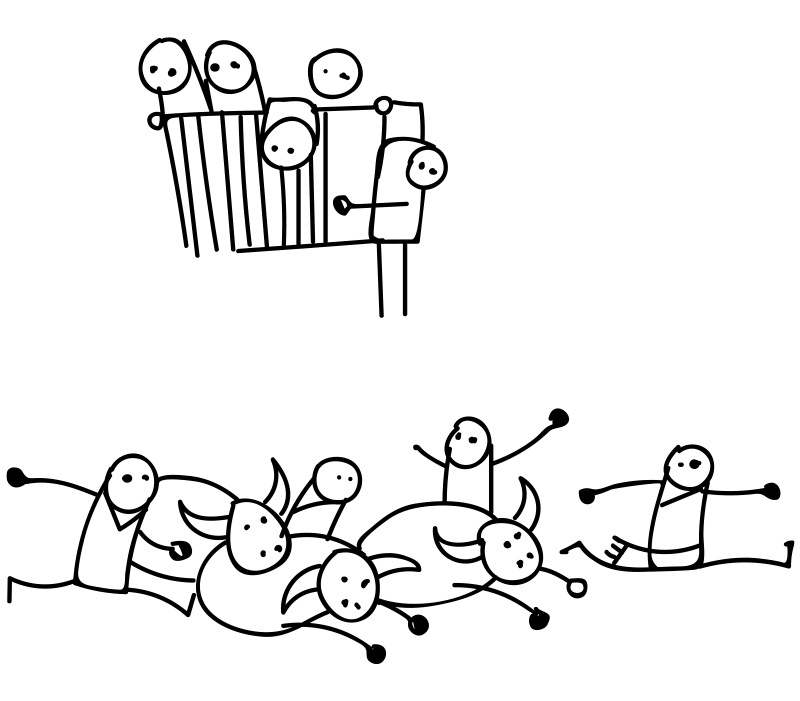
Bull running
8 in the morning. 6 bulls. 848.6 metros.
The encierro is a fast, violent and tense race. In just a few minutes, lads, an increaing number of girls and bulls face each other in a battle to reach the bull ring. They are the main feature but cattle herders, carpenters, police and emergency services ensure that the encierro, which is more crowded with every year that passes, goes by without problems.
What is it and what is its history?
If one thing symbolises the fiestas of San Fermin it is the encierro. It basically consists of running before the bulls in a suitably fenced-off street. The aim of the encierro is to transfer the bulls from the corrals of Santo Domingo to the Bull Ring, where the bullfights are held in the afternoon.
Six fighting bulls and two groups of oxen to guide them run through the streets. The second herd makes the run a few minutes later to collect any bulls that might have stayed behind. The route goes through different streets of the Old Quarter of the city and measures 848.6 metres.
When it commenced in the 14th century the encierro did not form part of the fiesta calendar, but arose from the need to transfer the bulls from outside the city walls to the ring, so they could be fought in the bullfights held in the afternoon. The custom of young men to participate in the encierro gradually become the most important part of the Sanfermines.
The encierro was approved on 28th June 1876. Since 1922, the year when the current Bull Ring was opened, the encierro passes along the current route.
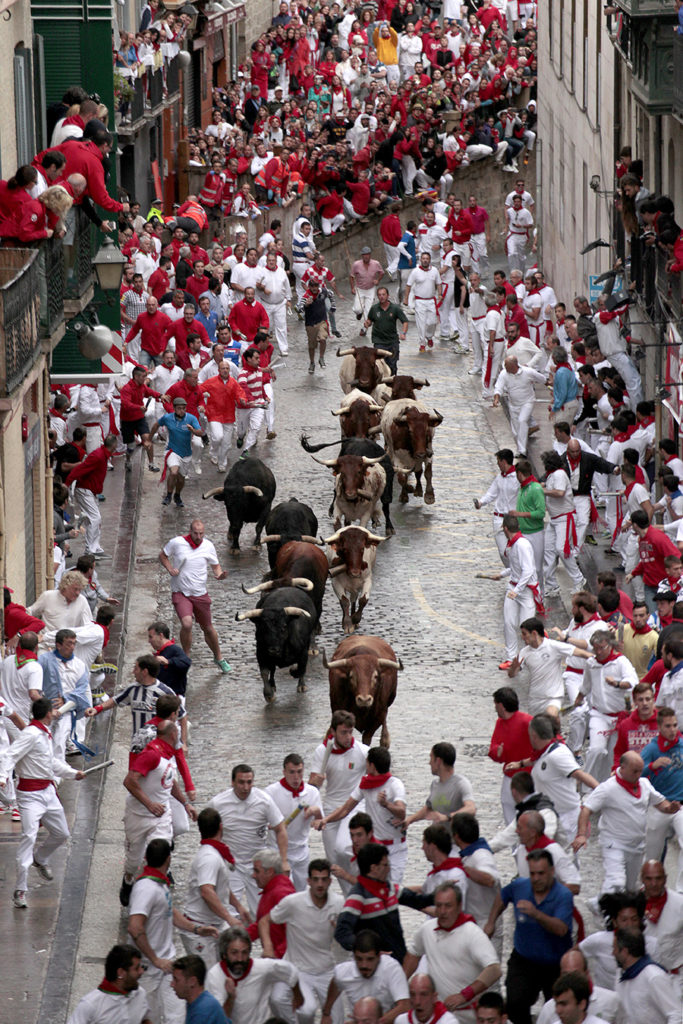
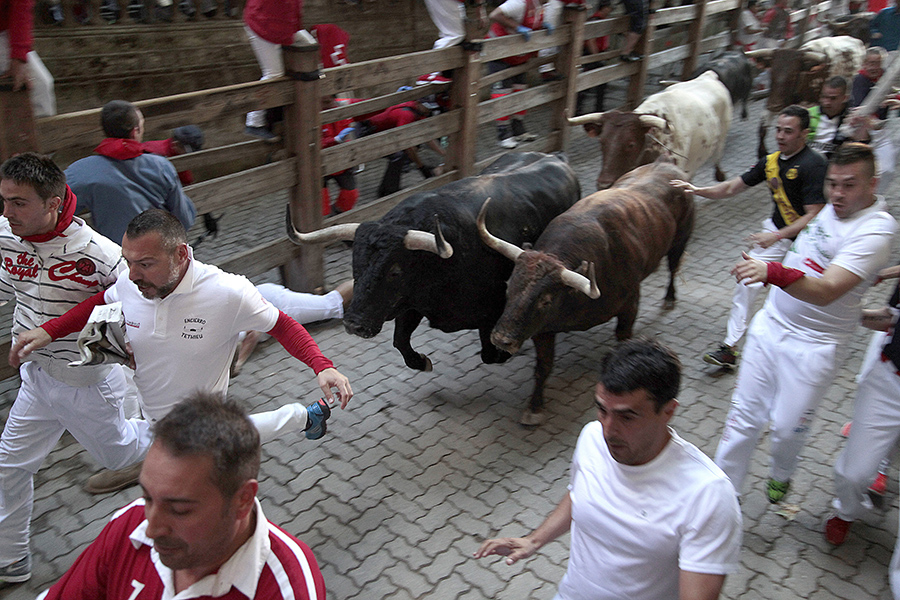
What happens?
The encierro is held at 8:00 every morning from 7th to 14th July. To run, its is necessary to be in the route before 07:30, between the slope of Santo Domingo and the Plaza del Ayuntamiento. Before the encierro starts, the custom is for the runners, with a newspaper in their hand, to ask San Fermin for protection. They do this 3 times before the niche, decorated with a panel covered with the kerchiefs of the peas, or social clubs, located on the slope of Santo Domingo.
The song
Lads and girls ask for protection from San Fermin during the run at 07:55, 07:57 and 07:59 at the niche of the saint, at the slope of Santo Domingo.
This tradition commenced in the Sanfermines of 1962, and was started by Jesus Ilundain Zaragueta ‘El Tuli’, an 85 year old local resident of the city and member number 1 of the Los de Bronce social club. On July 10, with bulls from Villamarta, together with another friend of his from Pamplona, they knelt in front of the corrals, not in front of the niche that did not exist at that time, and began to sing ‘a San Fermín pedimos’.
At 08:00 the first rocket is launched, which indicates that the corral doors of Santo Domingo, where the bulls and oxen are kept, have been opened. A second rocket is launched to announce that the bulls have left the corrals, moved on by the herders.

Route of the encierro
The route of the encierro is divided into different sections, each one with its own peculiarities and characteristics.
Cuesta de Santo Domingo
The first section is that of the slope of Santo Domingo, of some 280 metres, characterised by a sharp slope where the bulls tend to bunch together. It is the fastest and most dangerous section due to the speed at which the bulls run.
Plaza Consistorial / Mercaderes
The second section is the Plaza del Ayuntamiento y Mercaderes, some 100 in length. It is the widest section of the route.
Curva de Mercaderes
The calle Mercaderes ends with a 90 degree curve to the right. This curve is famous because this is where many bulls fell and the herds split up. Non-slip materials have been added to the road surface to put a stop to this.
Calle Estafeta
The following section is the calle Estafeta, 304 metres of street characterised by its narrowness and the opportunity the runners have to place themselves before the bulls, who are now tired. It is the most popular and widely used section. It is divided into two: Estafeta-Bajada de Javier, which has a slight slope of 2%, and Bajada de Javier-Telefanica, where the herd starts to break up.
Curva de Telefónica
Before entering the plaza, the route goes down the calle Duque de Ahumada, a section known as ‘de Telefanica’. It is a 100 metre section where the route opens up and the bulls generally slow down.
Callejón
The route narrows once again when it reaches the callejan de la Plaza de Toros, to the extent that in several encierros jams have been caused by the number of fallen runners. The runners can take refuge in the barriers placed in the street. It is a 25 metre long section with a descent.
Plaza de Toros
The encierro ends at the Bull Ring, in which the lads and girls fan out and let the bulls enter so they can go directly to the corrals, with the help of dobladores. When all the bulls are in the corral the third rocket is launched. With the fourth and final rocket, after the entry of the bulls into the corrals of the ring, the encierro has ended.
After the encierro, yearling bulls with capped horns are released into the Bull Ring.
Data of the encierro
Average duration:
3 m 55 s.
Average speed of bull:
24 km/h.
Longest encierro:
30 minutes (11th July 1959). A bull fell behind a dog had to be used to bite the bull and so force it to enter the corrals.
Most tragic encierros:
10th July 1947 and 13th July 1980. ‘Semillero’ (Urquijo) y ‘Antioquio’ (Guardiola), respectively, each killed two runners.
Breeder of most dangerous bulls:
Guardiola Fantoni. 1 death in 1969 and 2 in 1980.
The oldest bull ranch:
Miura. This year 2019, the Miura bulls will run their 38th encierro. Their behavior as a bull-breeding has always been noble and they have always been the preferred bull-breeding for the runnings with crowds such as Saturdays and Sundays. This is no longer always the case however, as without losing either their nobleness or their size these bulls have become faster and more dangerous in ecent years. From 1980 to 2000 Miura bulls gored someone in all their encierros. From 2000 to 2018 there were fifteen goring incidents.
Number of casualties:
In 2018 a total of 42 runners were injured during the encierros, although only 2 of these were gored by a bull; this was the lowest figure in the last 35 years. The gorings took place during the encierros of the 7th and the 13th and the anumals responsible were from the Puerto de San Lorenzo and Jandilla ranches; in both cases the injuries were not serious.

2.000 runners:
To run in the encierro it is essential to be in excellent physical shape. For this reason those who habitually run look after themselves and prepare themselves every day to take part in the race. They enjoy the fiestas in a different manner, without staying up all night and avoiding excesses. The number of runners in the encierro midweek can be up to 2,000 runners daily, a figure that almost doubles at the weekend encierros. The average age of the runners is 28 and they run about 100 metres. Before starting the encierro, a runner’s pulse may reach 148 beats a minute.

The importance of the herders :
The herders go behind the bulls and drive them with sticks towards the Bull Ring. Another of their functions is to prevent runners from coming from behind, creating the risk of a bull turning around and goring someone.

2,700 boards and 900 fence posts:
The barriers were first put in place to demarcate the route of the encierro and are the most important safety barrier. In the first days of June, four employees of the carpentry firm Aldaz Remiro, from Puente la Reina, begin to put in place the barriers of the encierro. They have, throughout the 848.6 metres of the route, a total of 2,700 boards, 900 posts and 4,000 wedges to fix the posts firmly in place in the holes.
There are also 70 gates to leave the route all along the barriers and 6 more that are closed as the bulls pass by to stop them from returning. On the last day of the fiestas, on 14th July, 85 people disassemble and collect the barriers.
The newspaper:
Most of the runners use a rolled up newspaper to measure the distance from the bull and to attract their attention if necessary.

The bull ring:
The current Bull Ring was opened on 7th July 1922. Lalanda, Saleri II and Juan Luis de la Rosa. During the encierro of bulls bred by Vicente Martinez, there was a pile up in a street that caused a large number of injuries.
Rules for running the encierro
In the encierro, runners must always respect instructions from the Police and the herders. There are 7 basic rules for runners in the encierro.
Any breach shall be punished with economic penalties.
1
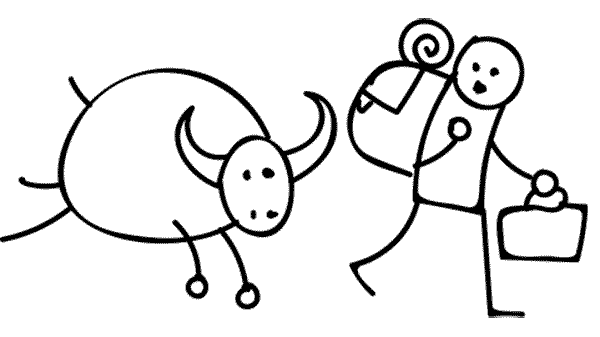
Running with bags, backpacks or other objects that might interfere with the runner’s movement is prohibited.
2

Running with flip-flops, unsuitable footwear or barefoot is prohibited.
3

It is forbidden to run while intoxicated, under the influence of drugs or without being in full physical and mental condition.
4
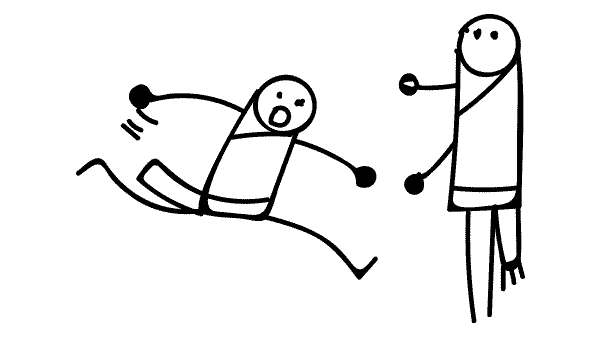
Loitering in the route of the encierro without the intention of running in front of the bulls is prohibited.
5
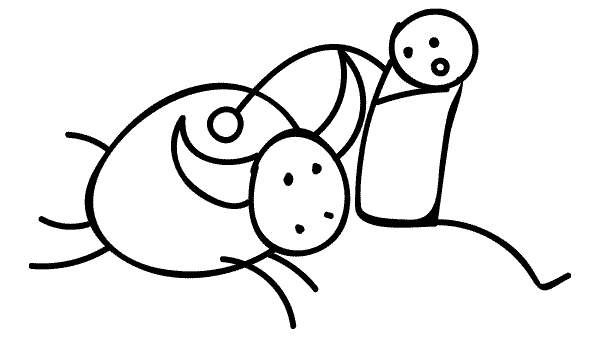
Touching the bulls is prohibited.
6
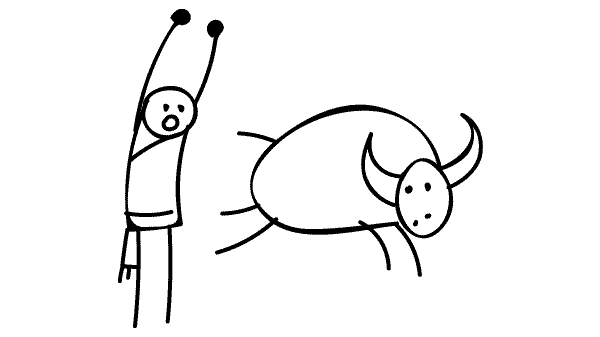
It is forbidden to provoque the bulls or call their attention from behind.
7
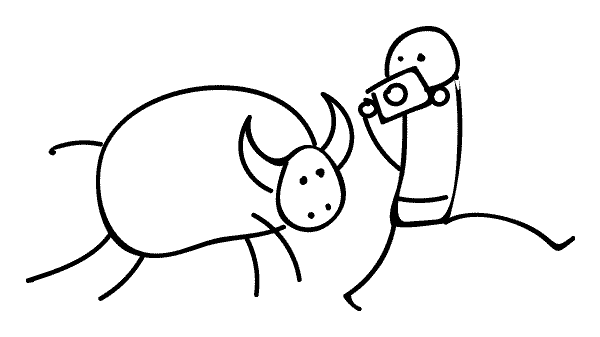
It is forbidden to take pictures or record while running.
The encierrillo
The first bullfighting event of the fiestas of San Fermin is the encierrillo.
Every night, from 6th to 13th July, the bulls are transferred from the gas corrals to the corrals of Santo Domingo. The event takes place at 10 at night in absolute silence and near darkness. The length of the route if about 400 metres.
Taking photos of the encierrillo is prohibited. To attend the event, a free pass given by the City Government a few days before the fiestas is required.
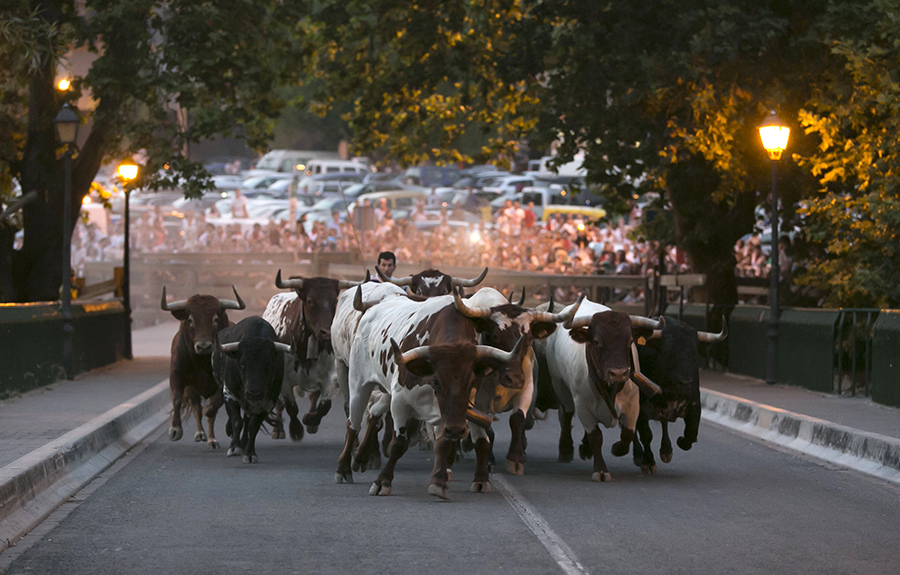
The bull fair
The bullfighting week of Pamplona, which commenced in 1959, is famous for being an event where the bull takes on more importance than the bullfighter. It is also unique for being an event where members of the festival social clubs and their bands, who sit in the unshaded area of the ring, liven up the corrida with songs and music and organise a parallel party.
The Bullfighting Week of Pamplona consists of eight corridas, from 7th to 14th July, at 18:30 in the bullring. As an aperitif for the main event, a bullfight with young bulls and picadors is held on 5th July and a corrida with specialist bullfighters on horseback on the 6th.
The bullfighting commission of La Meca (La Casa de Misericordia) has organised this event for over half a century, which along with the bullfights of San Isidro of Madrid and Seville, form the three most prestigious events in Spain. The best bullfighters currently on the scene participate and fight with bulls from the most prestigious breeders.
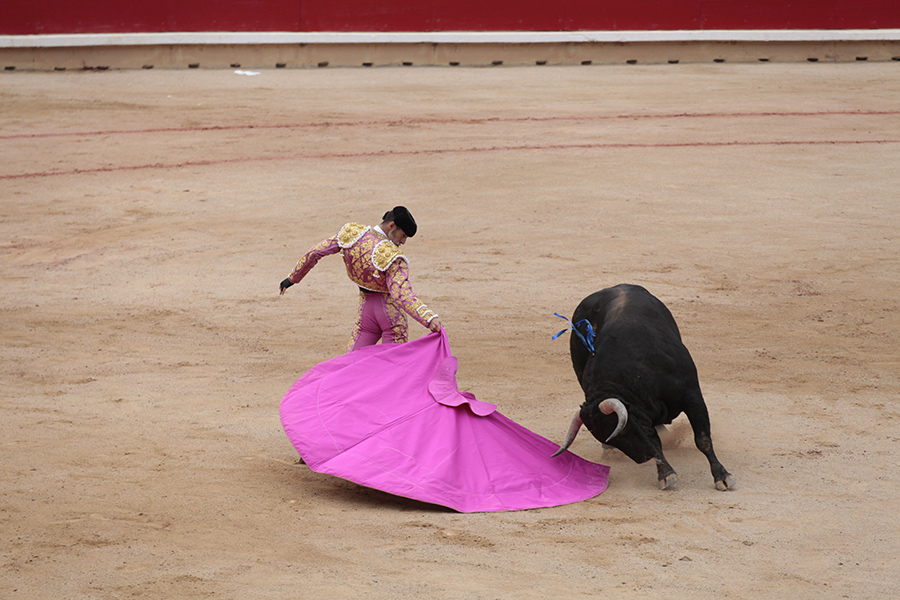
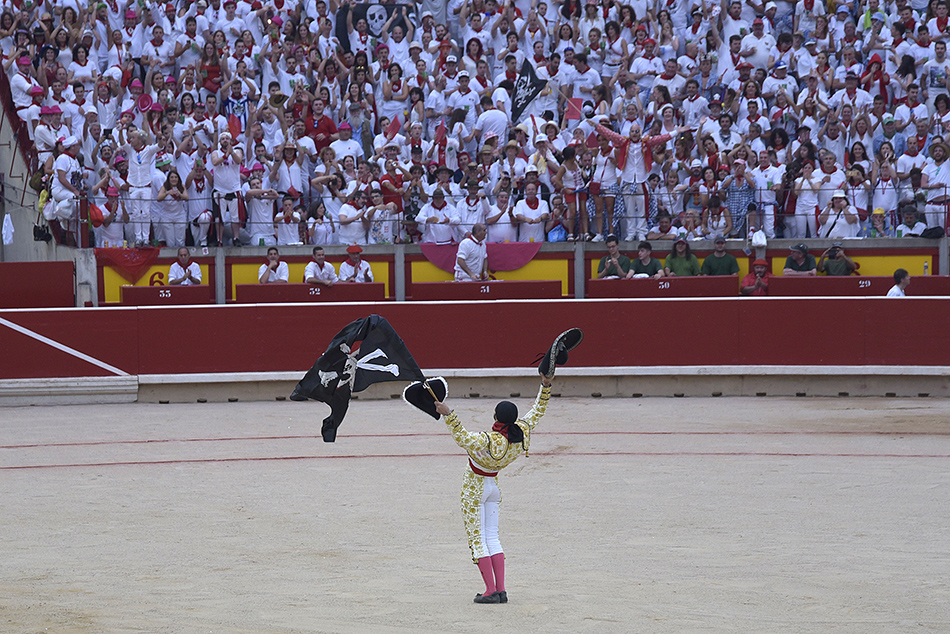
Every year, the Carriquiri Award is given to the bravest bull of the fair. Likewise, the Feria del Toro Award is given to the cattle that have given the best overall performance in the bullring.
In addition, the Pamplona Fair stands out for its solidarity purpose: all the profits obtained from the different programmed events are destined to the elderly people cared for in the Casa de la Misericordia.
The Monumental de Pamplona, inaugurated on July 7, 1922, is the second largest bullring in Spain and the fourth largest in the world, after the bullrings of Mexico, Madrid and Nimes.
